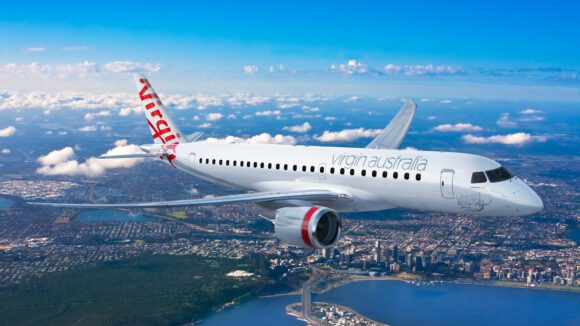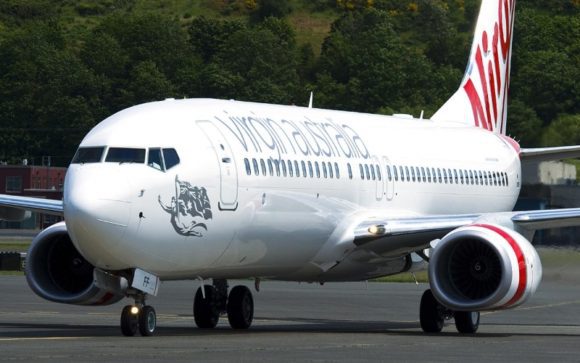
VirginAustralia
Is there a future for Virgin Australia? That’s the question now that the company has filed for voluntary administration on April 21 and is seeking investors who are confident enough to continue with the 20-year-old airline. For the moment, the protection scheme allows Virgin Australia to operate a government-supported skeleton domestic network.
A team of administrators from Deloitte led by Vaughan Strawbridge has been appointed to find investors for the airline. “Our intention is to undertake a process to restructure and refinance the business and bring it out of administration as soon as possible. There have been several expressions of interest so far”, Strawbridge said in a Virgin press release. He expects this process to take two to three months.
According to Strawbridge, there is ‘extraordinary interest’ in the business from at least ten interested parties. This includes Australian private equity group BGH Capital, says Reuters. The administrators are working closely with a representative of the government. Excluded from the administration in Velocity Frequent Flyer, also part of Virgin Australia Holdings. For the moment, no redundancies will be made and the administrators hope to save as many jobs as possible.
With a muted $5 billion debt and without the benefit of a strong liquidity position, Virgin Australia Holdings’ position became very vulnerable in the last few weeks. When Australia imposed restrictions on traveling in March and VAH had to reduce its schedules, that’s when the Virgin Australia and subsidiary Tigerair began to feel the pain. Most aircraft were grounded, 8.000 staff put on furlough and another 1.000 have been made redundant.
VAH sought $1.4 billion in government loan guarantees, but this was denied after huge pressure from its main rival Qantas. It entered negotiations with potential investors but as they were inconclusive and uncertainty prevailed, Australia’s stock market ASX suspended trading of VAH on April 16.
Notably, Virgin’s own major shareholders Etihad (20.97 percent), Singapore Airlines (20.03), Nanshan (20.01), HNA (19.86), and Richard Branson’s Corvina Holdings (10.02) have been unwilling and – in troubles of their own – unable to support.
Started as Virgin Blue
Conceived as Virgin Blue, the airline started operations with two Embraer E190s in August 2000. In its first decade, it changed ownership a few times between Patrick Corporation and Toll Holdings, before in 2010 Etihad joined as a major shareholder. This was followed by Singapore Airlines (initially through a codeshare agreement) and Chinese investors. In 2011, Virgin Blue became Virgin Australia. It acquired Tigerair Australia in 2015. Since its conception, Virgin Australia has captured one-third of the Australian air travel market and plays an instrumental role in the country’s leisure and holiday network. In 2019, it flew 25.5 million passengers, had 10.620 employees, and operated a fleet of 133 aircraft including the Boeing 737-700 (2) and -800 (73), 777-300ER (5), Airbus A320 (2), and A330-200 (6), plus a regional fleet of 14 Fokker 100s and 14 ATR 72s. It has 40 MAX 8s on order.
While revenues have been showing an upward curve from $3.27 billion in 2011 to $5.83 billion in 2019, Virgin Australia had been loss-making for the last seven years. It ended 2019 with a Group statutory loss after tax of $315.4 million, which included $223.2 million in restructuring costs. Net cash was $1.7 billion. While boosting higher revenues, both Domestic and International reported lower EBIT.
Loss-making since 2012
The 2019 loss was an improvement from the 2018 result, which showed $-653.3 million due to non-cash accounting adjustments. Other results: 2017 $-185.8 million, in 2016 $-224.7mln, in 2015 $-93.8 million, in 2014 $-355.6 million, in 2013 $-98.1 million, 2012 $22.8 million profit, 2011 $-67.8 million.
In the 2019 annual report, CEO Paul Scurrah remarked that VAH has to better manage its cost base and strengthen its business. The restructuring included the deferral of the 40 MAX to reduce capital expenditures, reduce capacity by 1.5 percent, cutting 750 jobs, and reviewal of other costs. “These changes will be key to building a stronger, more resilient business and ensuring that we can continue to provide strong competition in all markets we operate in”, said Scurrah, who was appointed in March last year.
“We always knew there was work to do on the balance sheet and that is something we will be addressing more aggressively through the actions of voluntary administration,” Scurrah said in today’s press conference.
“This is not the end for Virgin Australia and its unique culture”, founder Richard Branson said in a statement on Twitter. “Never one to give up, I want to assure all of you – and our competitor – that we are determined to see Virgin Australia back up and running soon.”
As Scurrah said he takes comfort from remarks from the government that the country needs a two-airline system. “Australia needs a second airline and we are determined to keep flying. Virgin Australia will play a vital role in getting the Australian economy back on its feet after the Covid-19 pandemic by ensuring the country has access to competitive and high-quality air travel. We will come back leaner, stronger, and fitter.”
Views: 1




